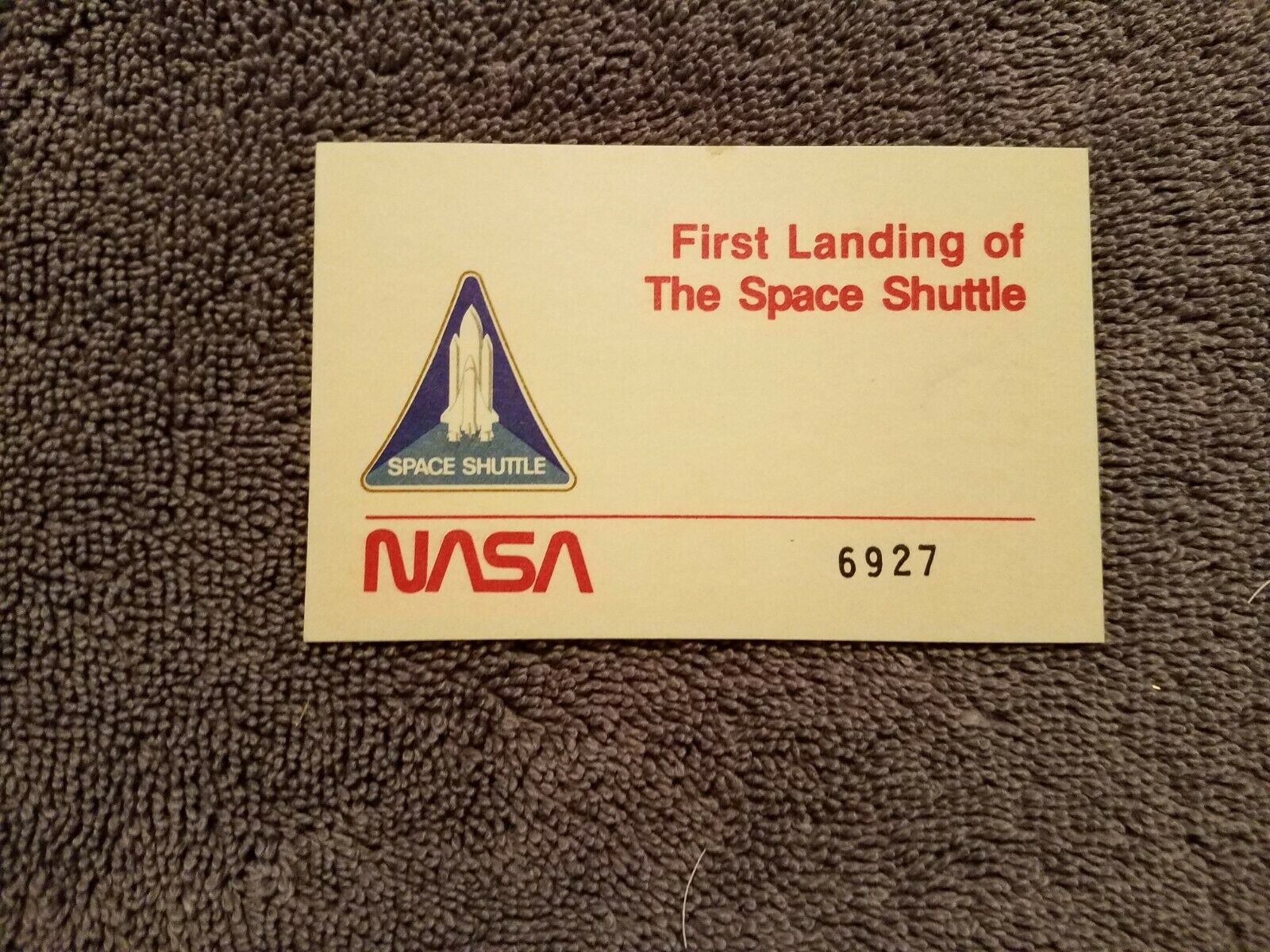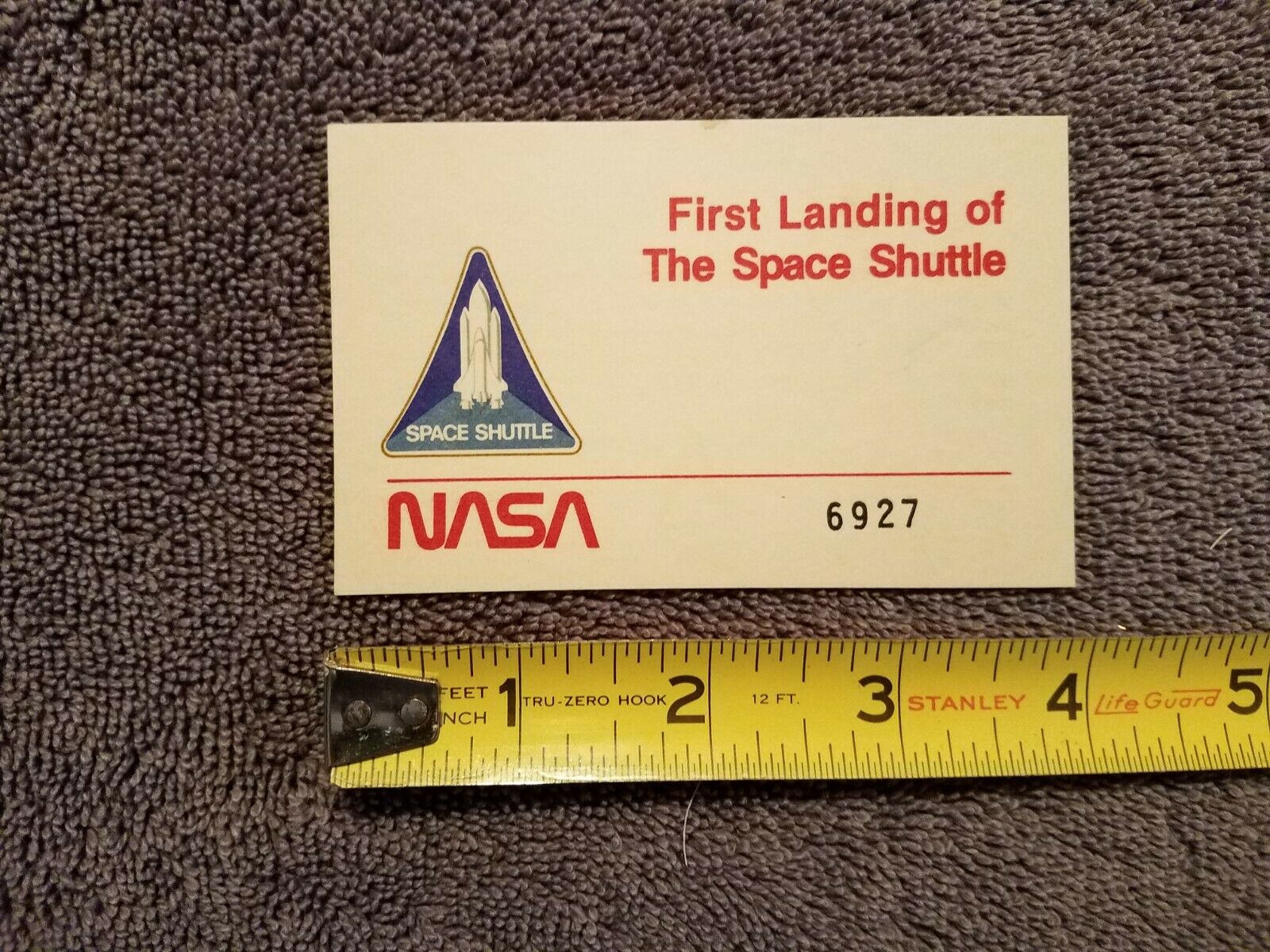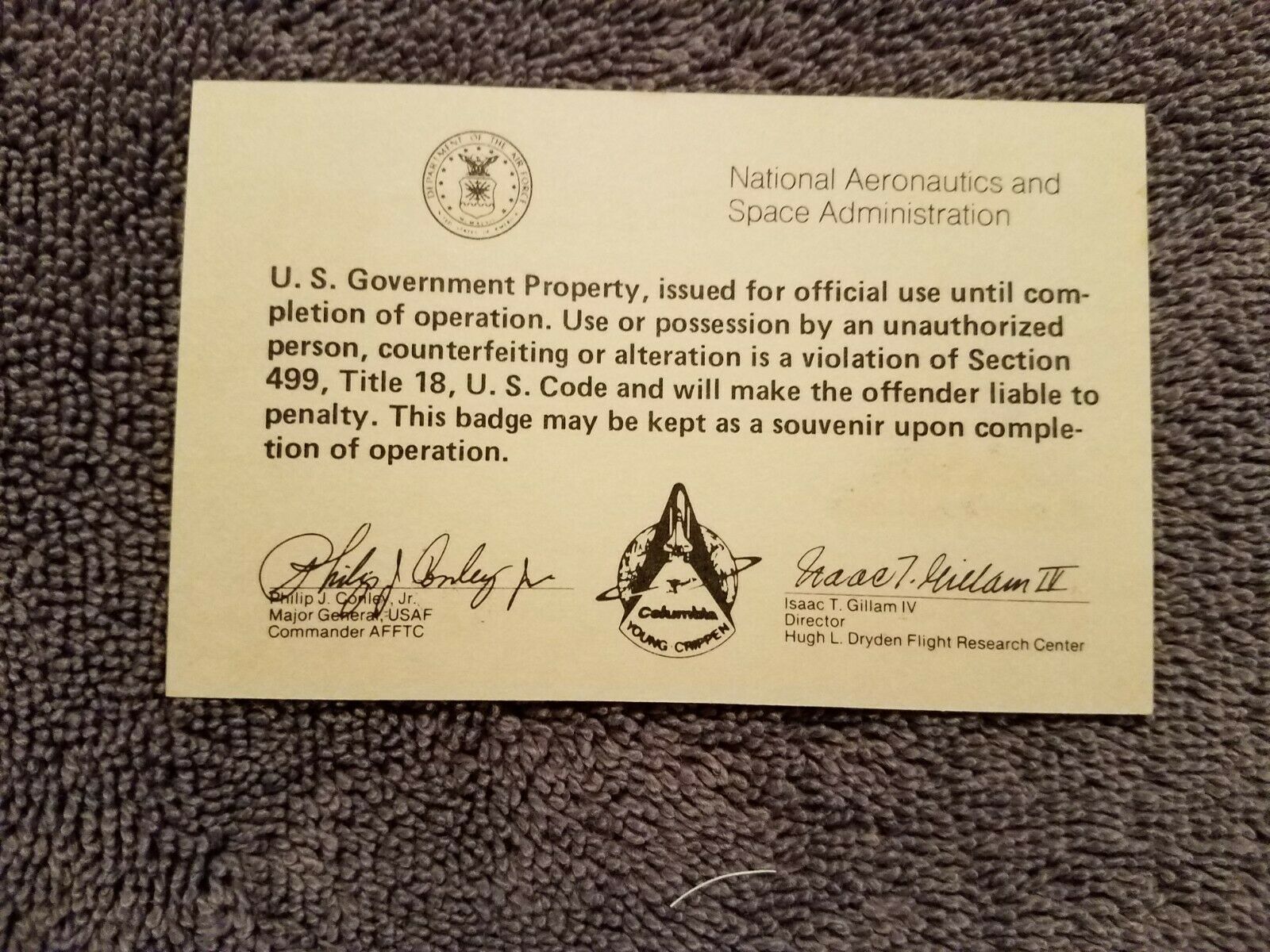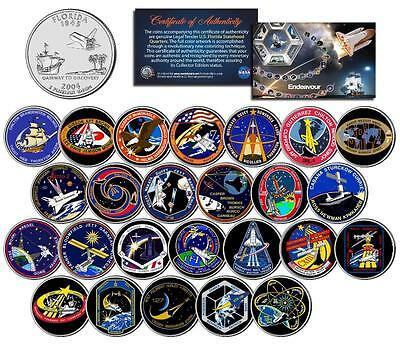-40%
NASA First Landing of the Space Shuttle pass the Landing of the Shuttle Columbia
$ 9.9
- Description
- Size Guide
Description
NASA First Landing of the Space Shuttle pass, the Landing of the Space Shuttle ColumbiaLanding took place April 14
th
1981 at Edwards Air Force Base, NASA Ames-Dryden Flight Research Facility
Pass Serial Number 6927
Measurements 3
5/16th
X
2
½
inches
Condition is Excellent with no folds, tears, dog ears, stains/foxing, or writing
Please see attached pictures
Please note on the reverse of the pass,
the signatures of the Commander of the Air Force Flight Test Center (AFFTC), and the Director of the Hugh L. Dryden Flight Research Center
STS-1 (
Space Transportation System
-1)
was the first
orbital spaceflight
of
NASA
's
Space Shuttle program
. The first
orbiter
,
Columbia
, launched on 12 April 1981 and returned on 14 April, 54.5 hours later, having orbited the Earth 36 times. Columbia carried a crew of two – mission commander
John W. Young
and pilot
Robert L. Crippen
. It was the first American crewed space flight since the
Apollo–Soyuz Test Project
in 1975.
The story of the First Landing of the Space Shuttle
On April 14th 1981, the crew awoke from their second sleep period earlier than planned. Preparations for return to Earth began with breakfast. Stowing of cabin items, flight control system checkout, data processing system reconfigurations, and then ejection suit donning followed. In Houston the Crimson team headed by their Flight Director
Don Puddy
came on duty in FCR 1 for the mission's final shift. His
CAPCOM
was astronaut
Joe Allen
with
Rick Hauck
assisting. Payload bay door closing was a critical milestone to ensure vehicle structural and thermal integrity for re-entry. If power closing had failed, Crippen was trained to conduct a one-man
extravehicular activity
(EVA) to manually winch them closed. With cabin switch positions verified, the crew strapped into their ejection seats. Meanwhile,
JSC
pilots Charlie Hayes and Ted Mendenhall were airborne over
California
's
Edwards Air Force Base
area in a
Shuttle Training Aircraft
(STA) performing a final check of landing weather conditions.
Auxiliary Power Units (APUs) 2 and 3 were started (to provide flight control hydraulic pressure). The 160-second twin-engine OMS de-orbit burn took place during the 36th orbit over the southern Indian Ocean and changed the orbital parameters from 168 mi × 170 mi (270 km × 274 km) to 168 mi × 0 mi (270 km × 0 km). This ensured atmospheric capture of the spacecraft close enough to the planned landing site to have sufficient energy for a controlled glide landing, but not so close that energy would have to be dissipated at a rate exceeding its structural capability. Young then slowly pitched Columbia up to the wings level nose high entry attitude. Both crew members armed their ejection seats during this pitch around. Nearly half an hour later APU 1 was started as planned. Shortly afterwards Columbia entered an approximately 21-minute long communications blackout. This was due to a combination of ionisation (16 minutes) and lack of ground station coverage between Guam and Buckhorn. Entry Interface (EI) was reached over the eastern Pacific Ocean 5,040 miles (8,110 km) from the landing site at a speed of around 17,550 miles per hour (28,240 km/h). EI is merely an arbitrarily defined geodetic altitude of 400,000 feet (120,000 m) employed by
NASA
for the purposes of trajectory computations and mission planning. Above this altitude, the spacecraft is considered to be outside the "sensable atmosphere".
Most of this first orbiter entry was flown automatically. An initial
angle of attack
of 40° had to be maintained until through the most severe aerodynamic heating after which it was gradually reduced. At about 330,000 feet (100,000 m) altitude a light pink air glow caused by entry heating became visible, and both crew members lowered their visors. Columbia had to maneuver 362 mi (583 km) "cross range" of its orbital ground track to reach the planned landing site during the entry. Consequently, a roll into a right bank was flown when the air density had increased sufficiently to raise dynamic pressure to 12 lbf/sq ft (570 Pa) (with speed still in excess of
Mach
24 and approximately 255,000 feet (78,000 m) altitude). Automatic roll reversals to control energy dissipation rate and cross range steering were performed at around Mach 18.5 and Mach 9.8. The crew clearly observed the coast of California as Columbia crossed it near Big Sur at Mach 7 and 135,000 feet (41,000 m). Both the Mach 4.8 and Mach 2.8 roll reversals were automatically initiated and manually completed by
Young
. The last RCS jet firing took place at an altitude of 56,000 feet (17,000 m)—14,000 feet (4,300 m) lower than desired (due to a predicted risk of combustion chamber explosion).
Young again took manual control for the remainder of the flight as they went subsonic approaching the Heading Alignment Circle (HAC). A wide left turn was flown to line up with lake bed runway 23, whilst
T-38
"Chase 1", crewed by astronauts
Jon McBride
and
"Pinky" Nelson
joined formation.
Main gear touch down occurred on Lakebed runway 23 at
Edwards Air Force Base
, NASA Ames-Dryden Flight Research Facility at 211 mph (339 km/h)
equivalent airspeed
, slightly slower and around one-half mile (800 m) further down the runway than planned. This was the result of a combination of better than predicted Orbiter lift-to-drag ratios and tail wind. Touch down time was 10:21 AM PST on 14 April 1981.
[14]
As they rolled to a stop a pleased John Young remarked over the radio:
This is the world's greatest all electric flying machine. I'll tell you that. That was super!
Columbia was returned to Kennedy Space Center from California on 28 April atop the
Shuttle Carrier Aircraft
. The 36-orbit, 1,074,567-mile-long (1,729,348 km) flight lasted 2 days, 6 hours, 20 minutes and 53 seconds.











